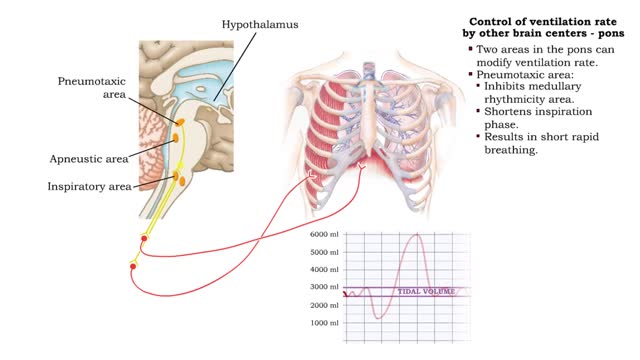Pressure volume relationships - Normal inspiration and expiration
By: HWC
Date Uploaded: 10/28/2019
Tags: homeworkclinic.com Homework Clinic HWC Pressure volume relationships Normal inspiration atmospheric and alveolar pressures contraction of the diaphragm thoracic cavity intercostals visceral pleura
• Changing the relative pressure in the compartments can control the direction of airflow between compartments. • In a closed compartment, pressure and volume are inversely related. • Reducing the volume will increase the pressure. • Increasing the volume will decrease the pressure. • Prior to normal inspiration, atmospheric and alveolar pressures are equal. • During inspiration, contraction of the diaphragm causes it to flatten, increasing the volume of the thoracic cavity by increasing length. • Additionally, contractions of the external intercostals elevate the ribs and increase the volume of the thoracic cavity by increasing width. • This causes the lungs and visceral pleura to be pulled outward, and lung volume increases. • When atmospheric pressure exceeds alveolar pressure, air moves into the lungs. Increased lung volume = Decreased alveolar pressure. • Prior to normal expiration, atmospheric and alveolar pressures are equal. • Two factors decrease the thoracic cavity and lung volume: • Relaxation of inspiratory muscles. • Elastic recoil of lung. • Decreases in lung volume causes increases in alveolar pressure. • When alveolar pressure rises above atmospheric pressure, air moves out of the lungs. Decreased lung volume = Increased alveolar pressure.
Add To
You must login to add videos to your playlists.
Advertisement












Comments
0 Comments total
Sign In to post comments.
No comments have been posted for this video yet.